What is patina and what features should be taken into account when decorating?
The word “patina” comes from the Italian “patina”, originally this term denoted a coating on copper. The green film has a second name – “verdigris”. Other metals are also subject to patination: iron rusts, silver turns black.
Today, patina in interior design means artificially aged items – furniture, accessories, trim details, decor.
The aging effect can be:
- Natural. Just what we talked about in the first paragraph – greening of copper, rust.
- Artificial. Created by man to emphasize the sophistication of details.
By material, there are:
- Metallic. In a kitchen with patina, these can be aged handles, pipes, mixers.
- Wooden. The effect can be craquelure – when white or any other color with a cracking effect is applied to the entire surface. Or partial – in this case, protruding elements are aged or, conversely, recesses are made darker.
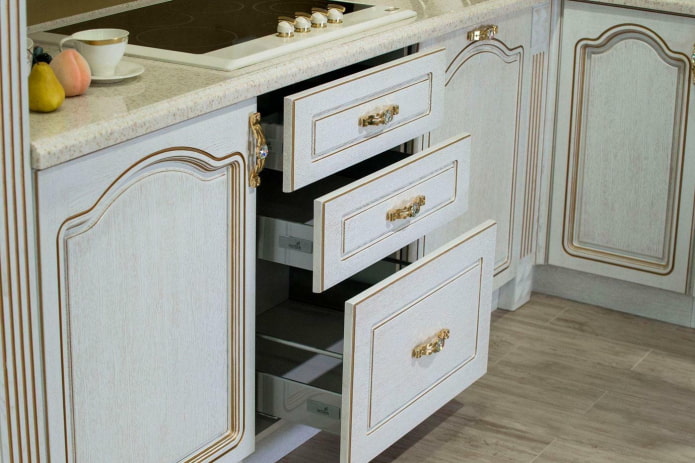
The photo shows gold contour patination of kitchen cabinets
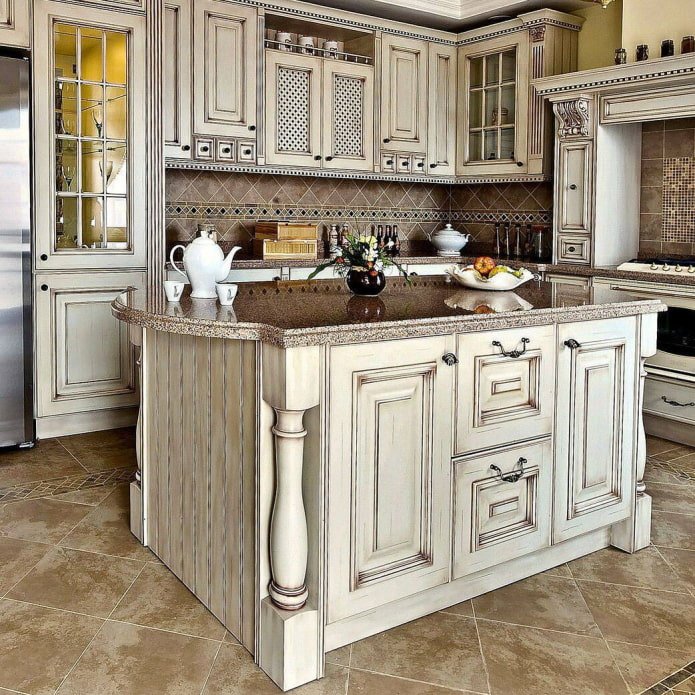
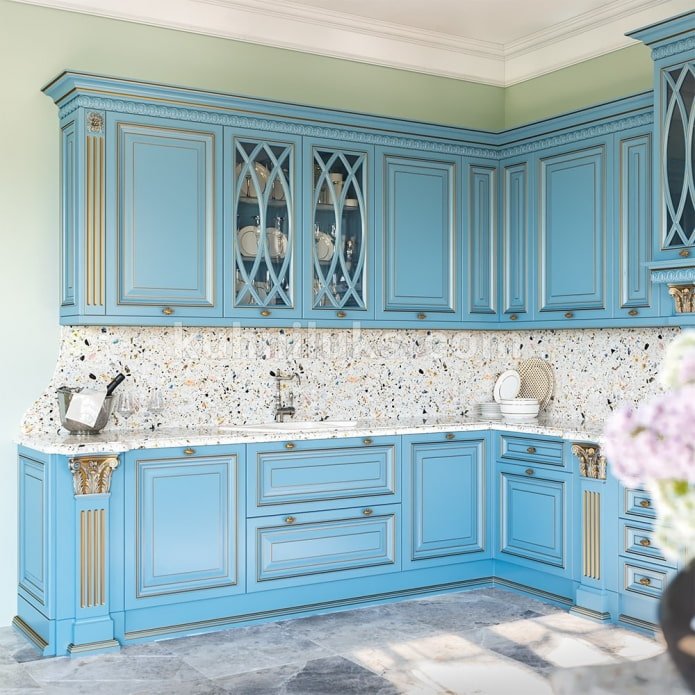
In the design of kitchens with patina, you should take into account only one detail: the decor will look exquisite only in a suitable interior and with a well-chosen kitchen set.
That is, classic carved facades in this technique really look more expensive, while modern glossy doors with an aging effect are an absurd picture.
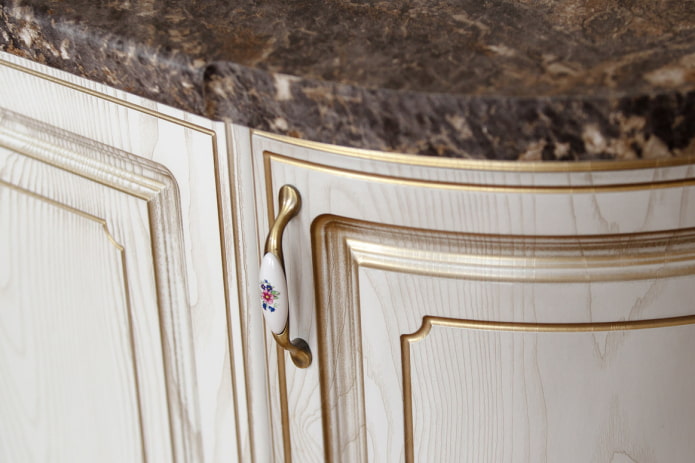
What color is patina?
To make kitchen furniture look natural, choose natural tones: silver, gold, copper, bronze. They are universal, used in dark and light kitchens. They make metals and wood look older.
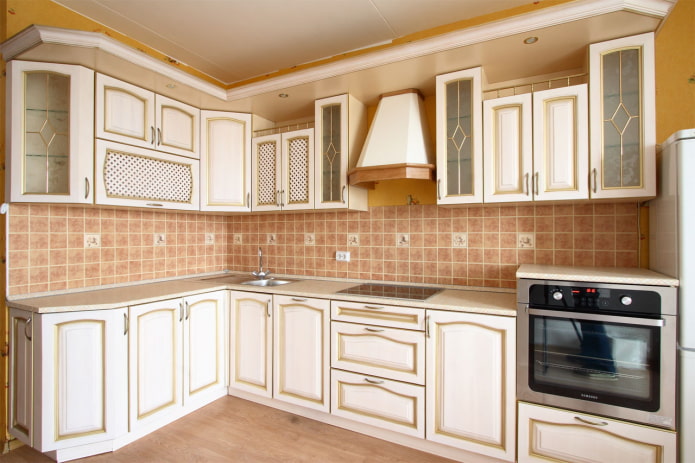
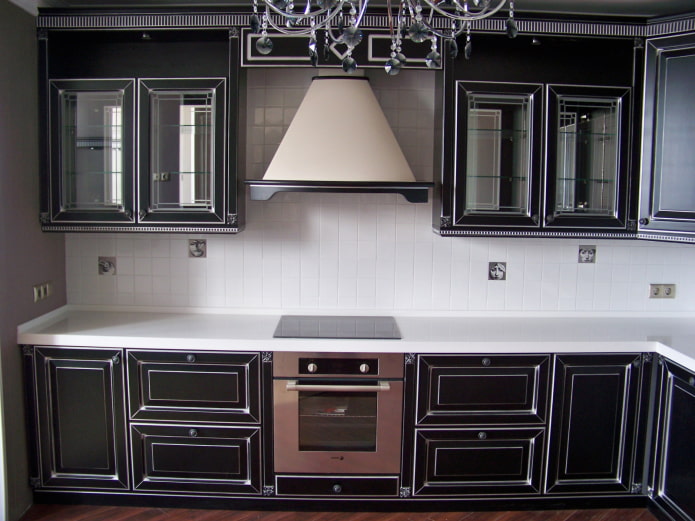

Combine metal with other Textures should be used skillfully: a warm brown or beige base (champagne, ivory) is emphasized by gold or copper processing. Cool gray, black, white kitchen is aged with silver.
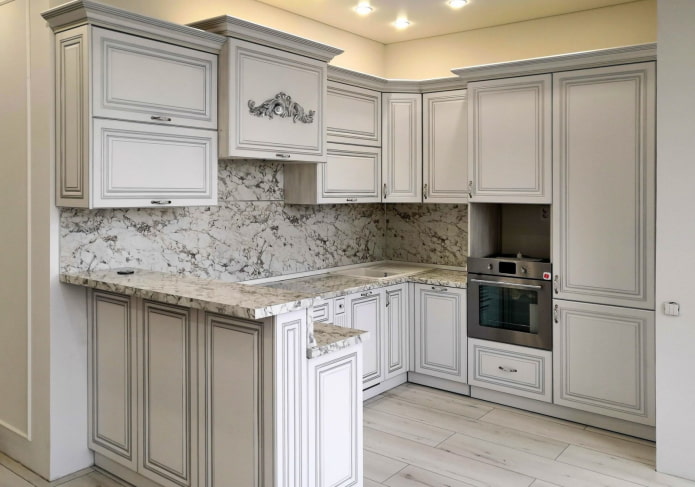
The photo shows a gray and white aged kitchen set
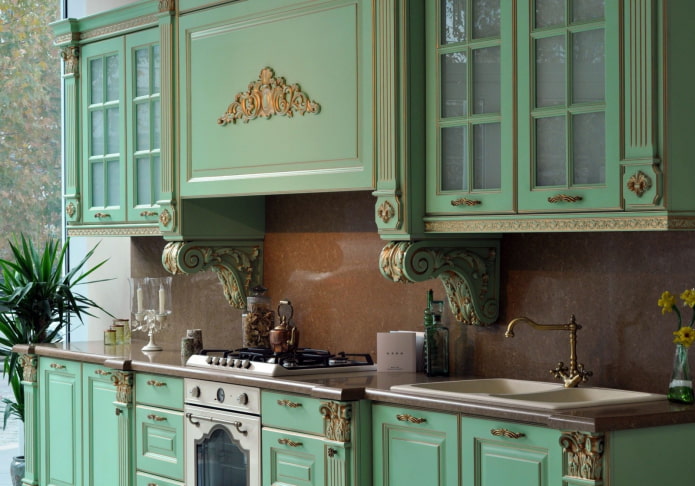
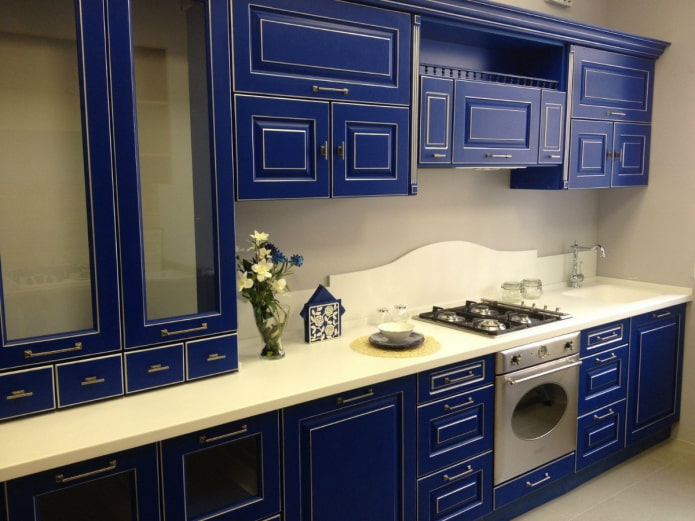
If the application is supposed to be on a colored base, the easiest way is to choose a color 2-3 tones darker than the original. Blue patina for blue furniture, brown for beige. An interesting effect is obtained if you play on the contrast: a snow-white kitchen with a black patina, blue with red.
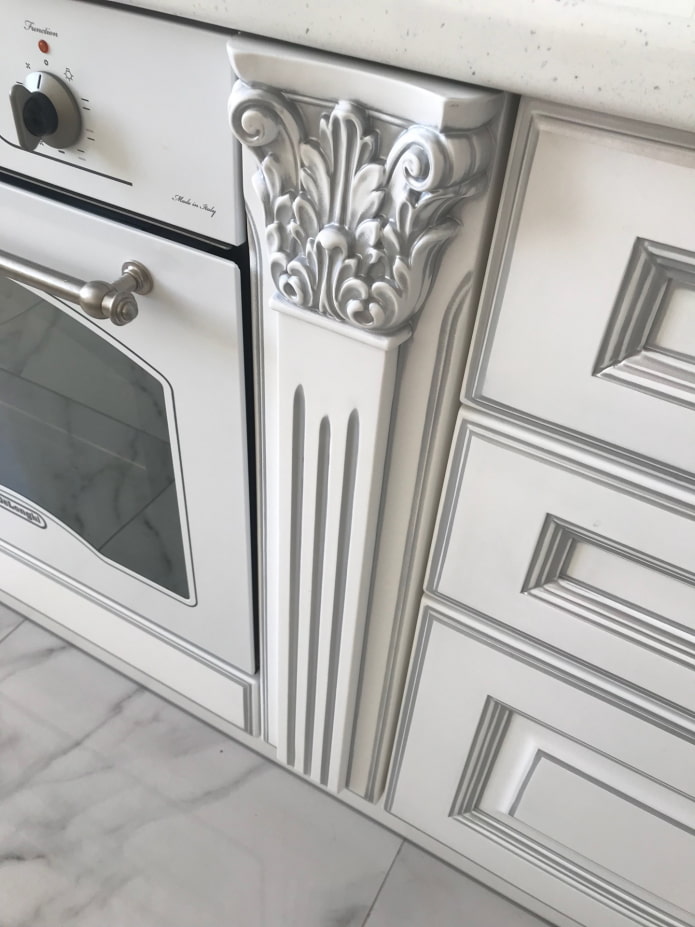
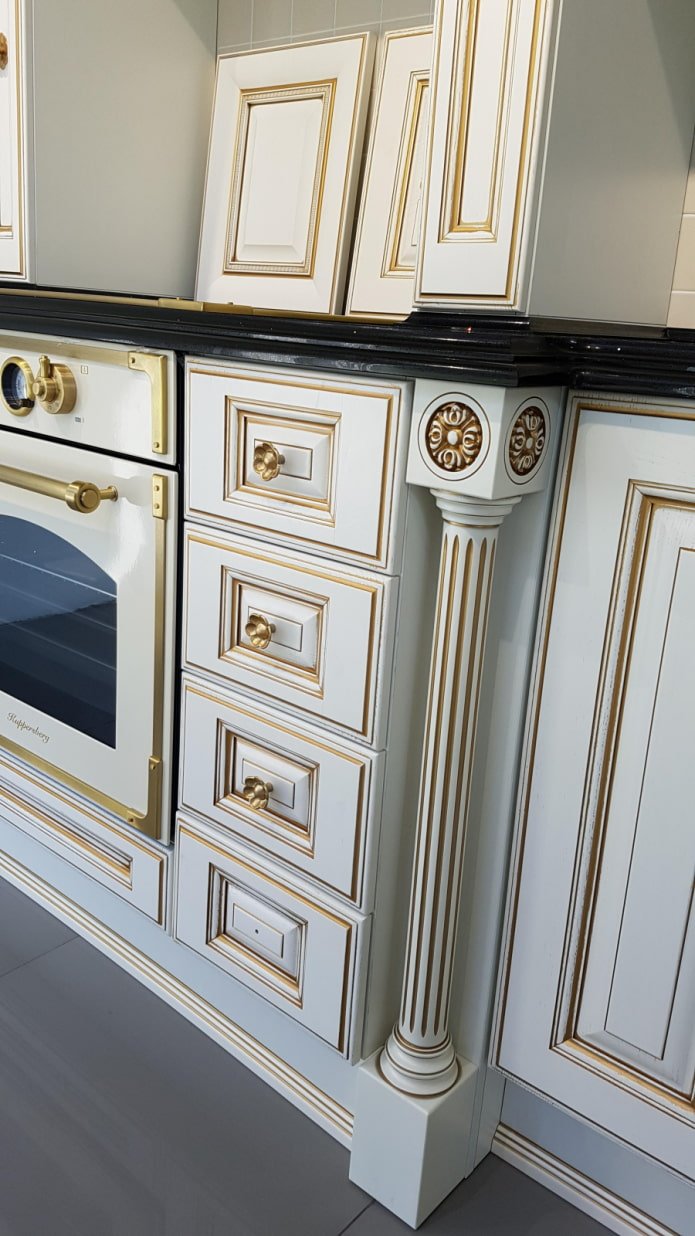
Application options
Classic kitchens have 3 main components – a set, a dining area, decor. Patina is applied to 1, 2 or all 3 elements: if you need to age all the details, choose a less contrasting effect.
The easiest way to create the right atmosphere in the interior and not overdo it with patina in the kitchen is to decorate the kitchen set. Today, manufacturers offer a wide range of ready-made solutions, including luxury and inexpensive options.
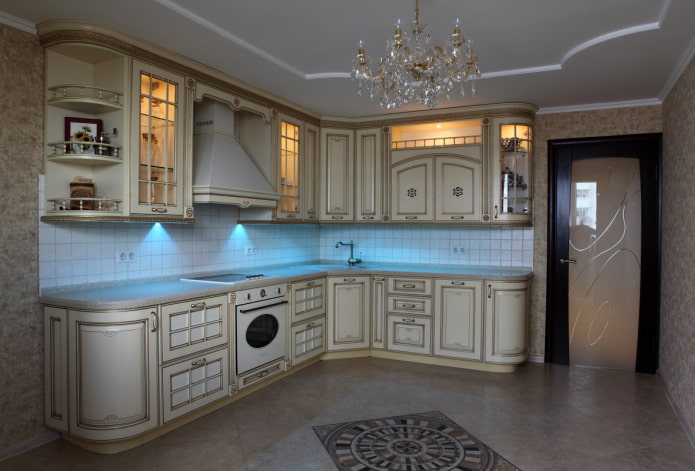
The photo shows a combination of blind, glass, lattice facades
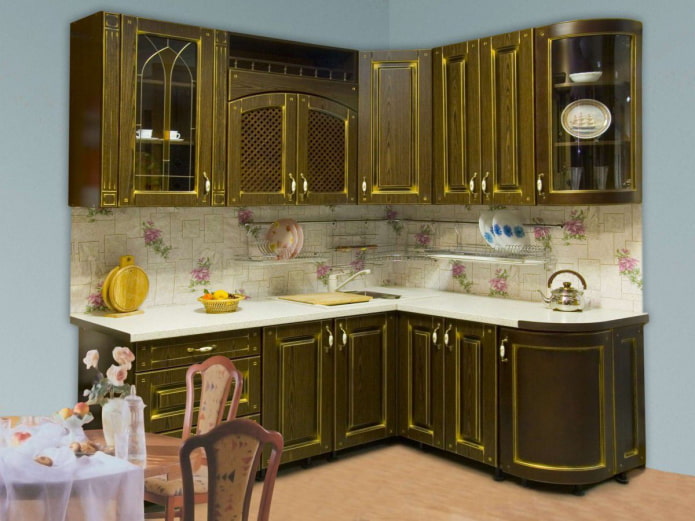
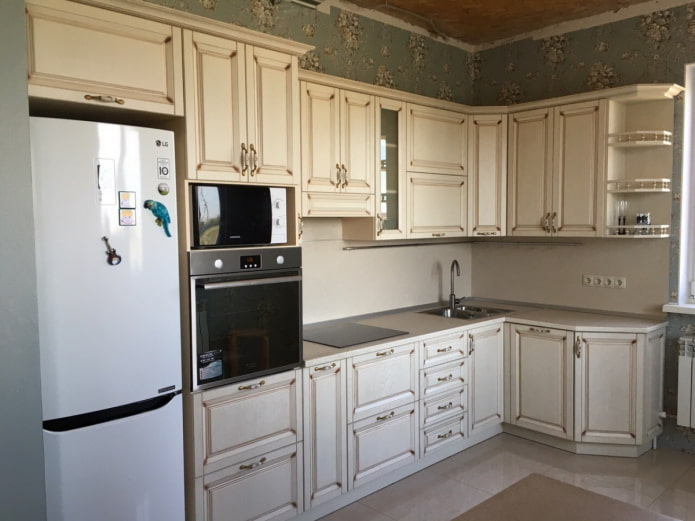
If you already have furniture in the kitchen, you can create the patina effect yourself. To do this, simply cover the facades with light paint, then dark, and sand down the protruding parts after the layers have dried. If you want a light kitchen, do the opposite: dark paint, then opaque light paint and fine sandpaper.
The second easy method is a dry brush. This method applies any shade to the surface from the edges to the center. When finished, do not forget to protect with matte varnish or wax.
Important! Natural wood in the kitchen looks great in a gold patina, dark types of veneered MDF are better covered with bronze, light solid wood will sparkle in combination with silver.
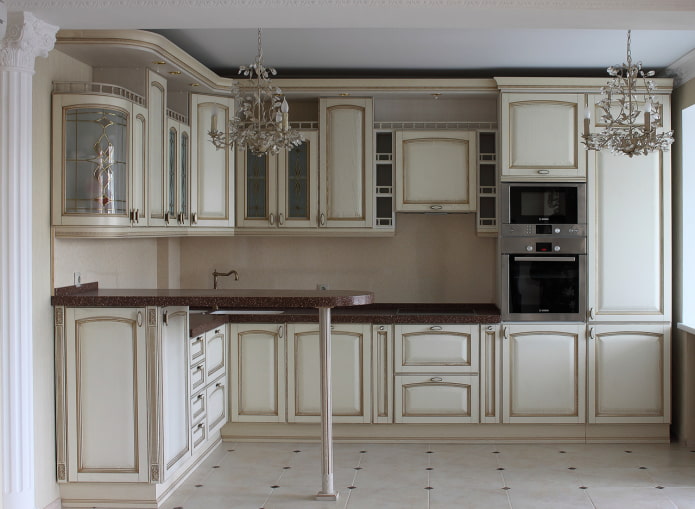
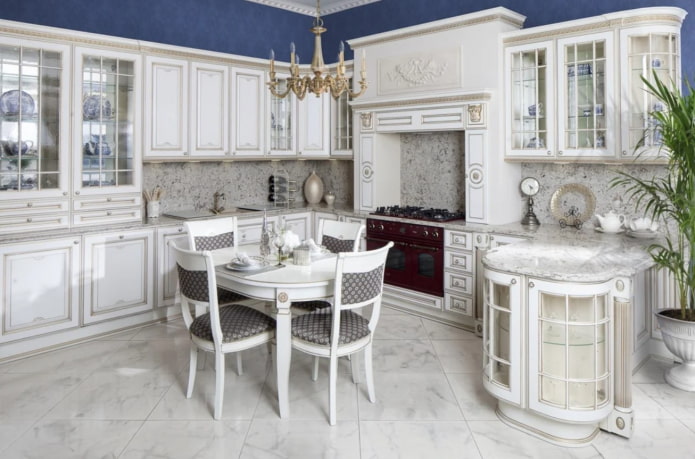
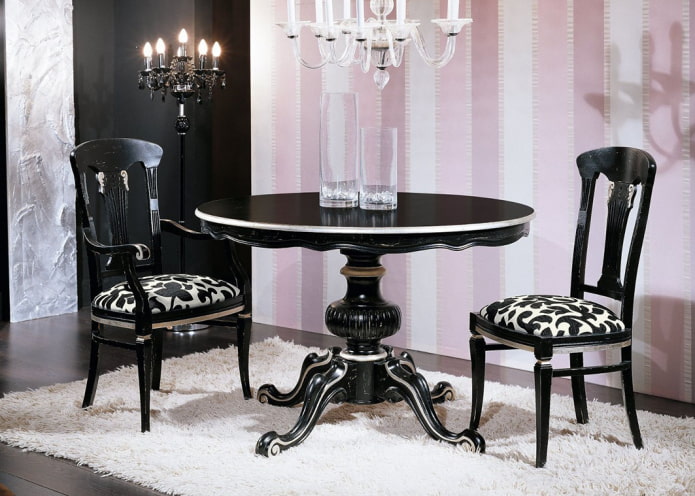
You can add coziness to the dining area with an aged table and chairs. In classic kitchens, the kitchen set and dining room furniture are chosen from the same material and in the same color – accordingly, the patination will also be the same.
Does a large number of identical elements seem boring? Order “reverse patination”: that is, a kitchen set, for example, white with black decor, and a table – black with white.
A less noticeable, but no less important nuance is decor. Patina is used to cover photo frames, picture baguettes, flower pots. You can find furniture handles, rails, curtains with an aged effect on sale.
By choosing fittings in one color (for example, copper with a green patina), installing them on a regular single-color set, you will still get the effect of a kitchen with patina – such small, nondescript at first glance details are so important.
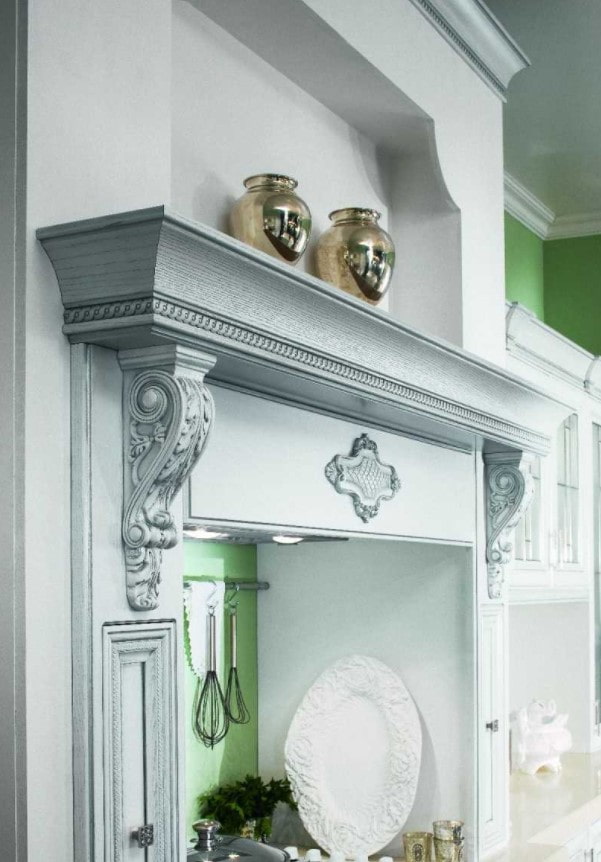
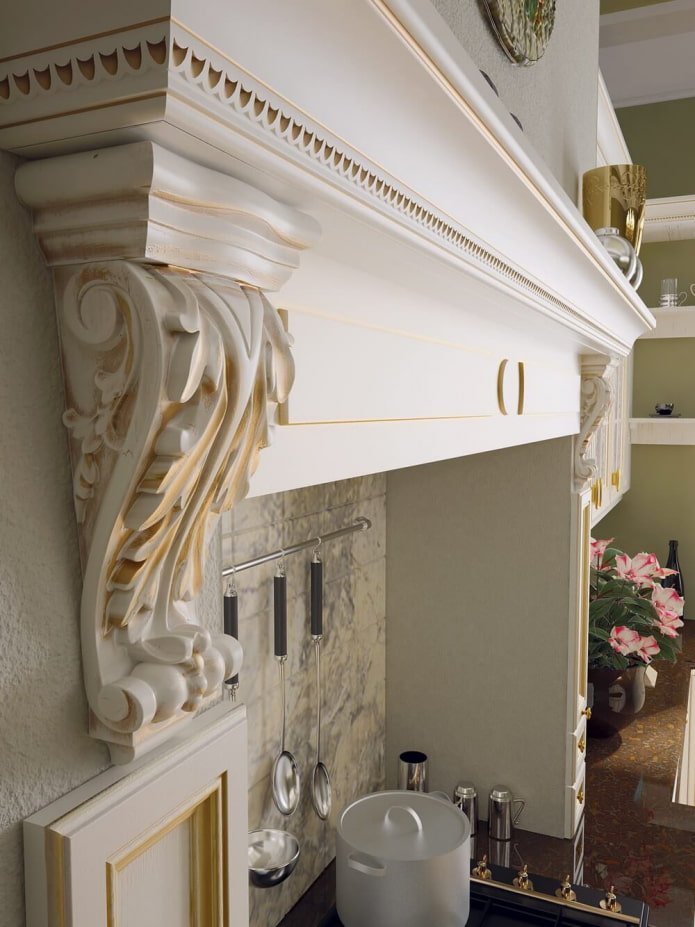
What styles is it suitable for?
A kitchen with patina is a controversial solution for an interior in an ultra-modern design, but in retro styles or rustic directions it looks great.
An aged kitchen set in the Provence style is a classic of the genre. Scuffs look appropriate and create a special French charm. Since the colors of the furniture are mainly pastel, it is better to fake the effect of antiquity with a white or silver shade.
A patinated kitchen in the boho and shabby chic styles is no less relevant. Both directions imply the visibility of the influence of time, which is perfectly emphasized by antique furniture with a gold or silver patina.
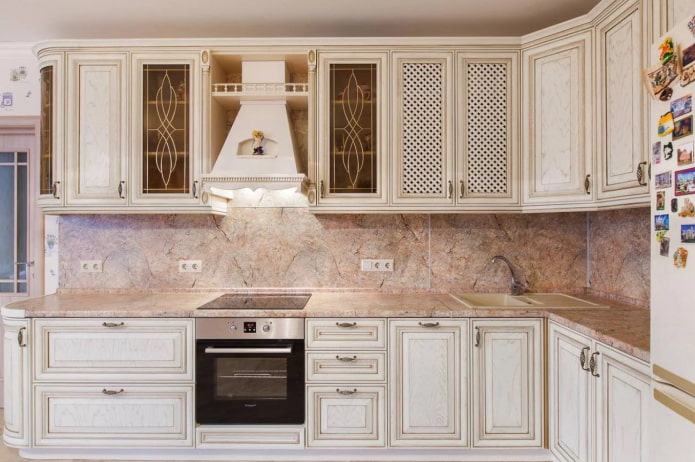
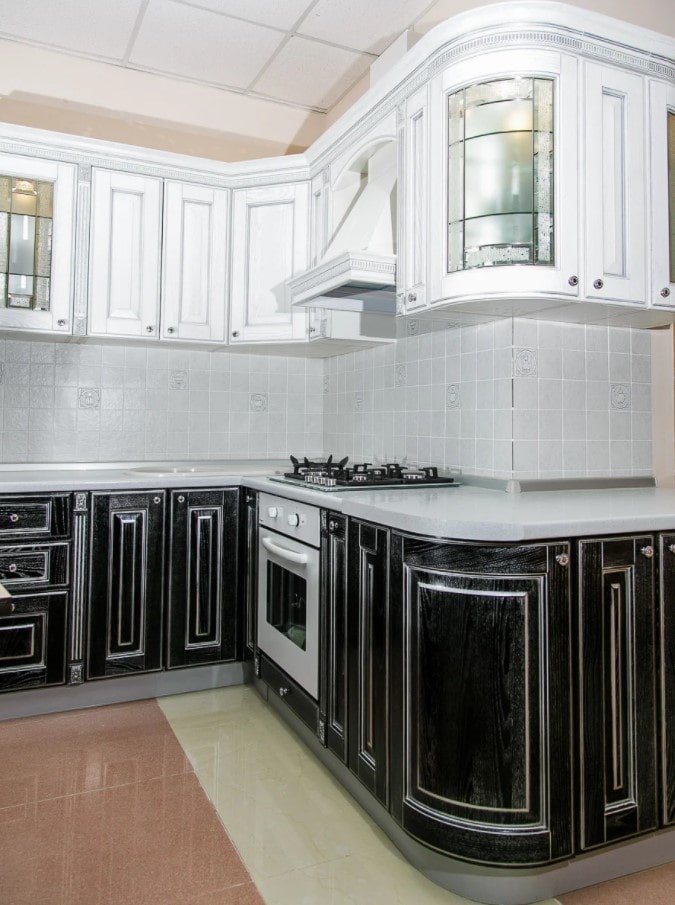
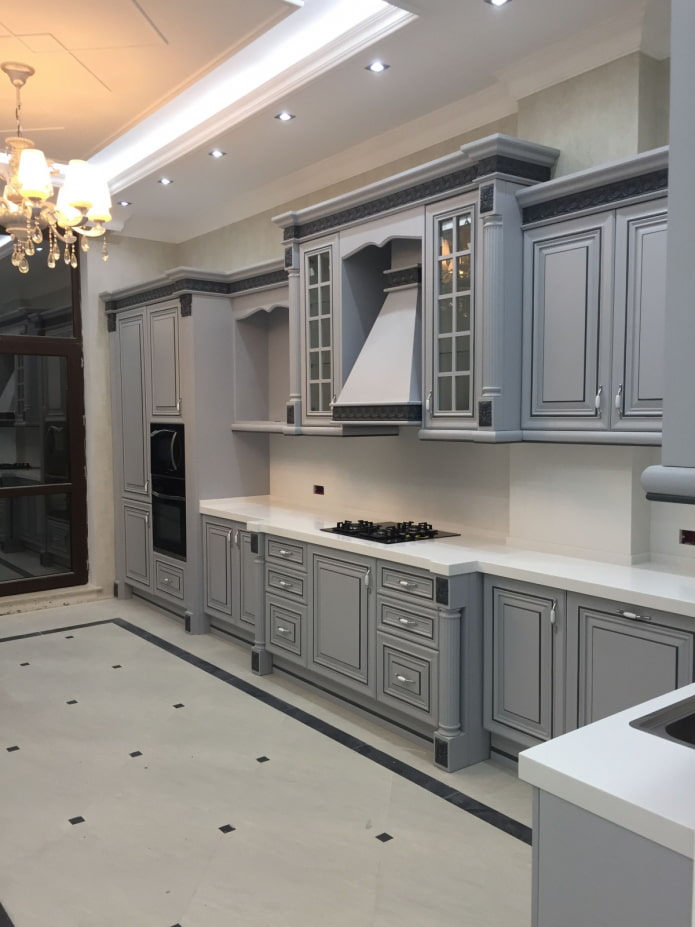
In In classic interiors, the patina effect is used not to age the furniture, but as an exquisite decorative coating: kitchens with a golden patina look more expensive than plain ones. The same technique is relevant for luxury styles: empire, baroque.
Oddly enough, noble aging is also appropriate in industrial design. However, for the loft style, this is rather a way to create an oxymoron: a combination of the incompatible. The decor can be more rough and limited: you will have to choose what exactly will be aged – accessories, a dining set, the facades of the furniture.
We cannot fail to mention the styles in which patination is definitely inappropriate: first of all, this includes modern styles – high-tech, modern, minimalism. Since glossy coatings are most often used for them. Scandinavian kitchen should not be aged either – it is already full of decorative details, patina will be superfluous.
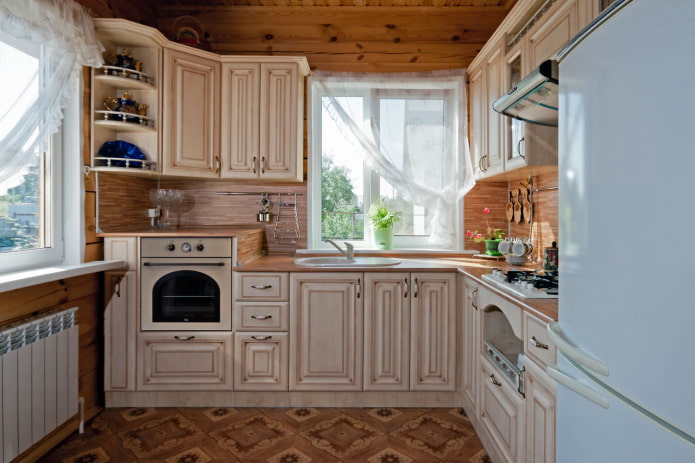
The photo shows aged furniture in rustic style
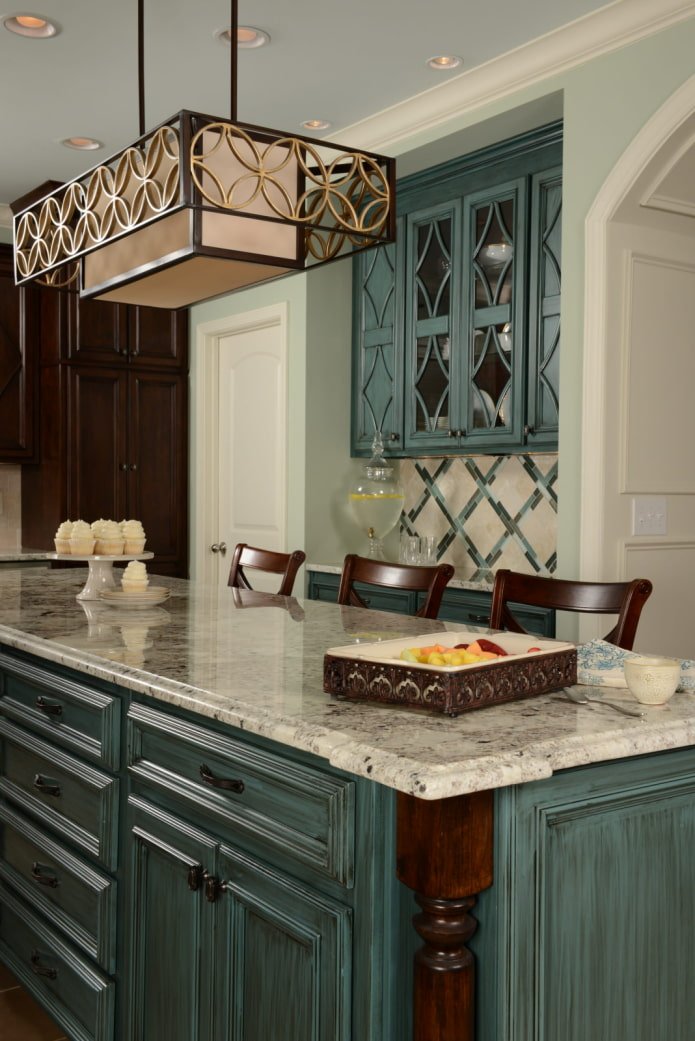
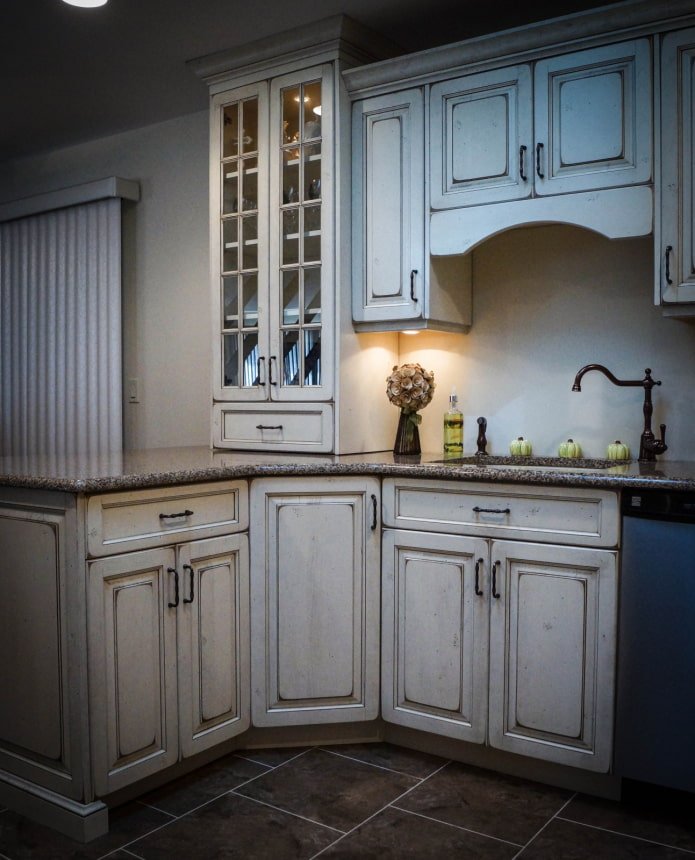
Examples in the interior
As practice shows, patinated furniture with protrusions or recesses in its structure on the outside looks best. That is, facades with moldings or frames in an aged look look more organic than smooth ones.
To make the effect more noticeable, deep and bright, combine blind cabinet doors with glass (it is better to match the layout to the color of the decor), lattice. Decorations in the form of decorative strips or balusters, carved plinths under the ceiling, stained glass painting, open shelves with “balconies” typical of classical styles are appropriate.
In Provencal cuisine, the patination is different – not contoured, as in classic or baroque, but blind. That is, not individual details, protrusions, recesses are highlighted, but the entire facade: a craquelure effect, dry brush coating is appropriate.

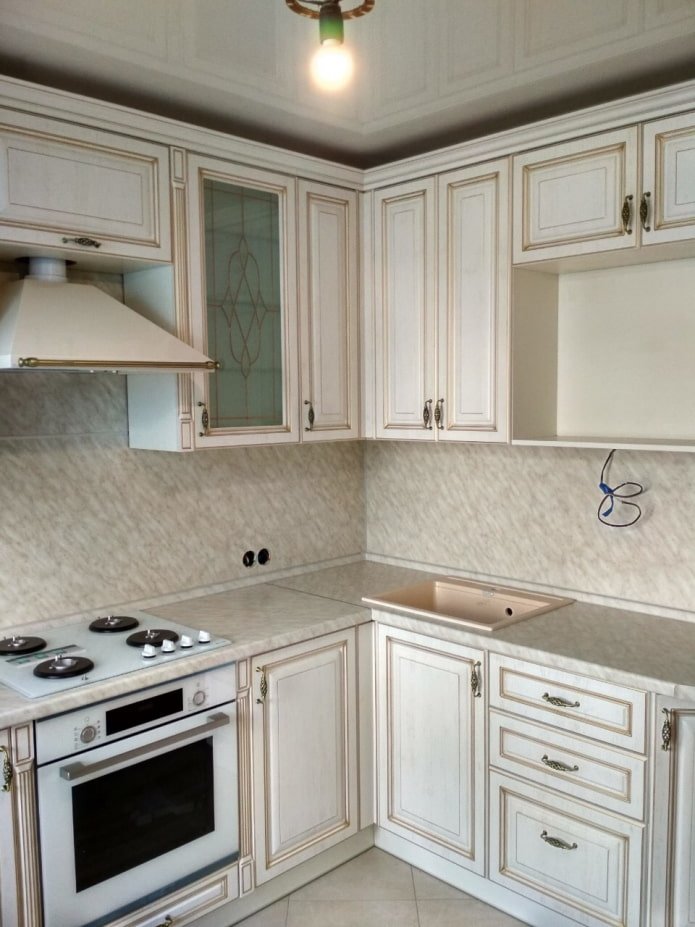
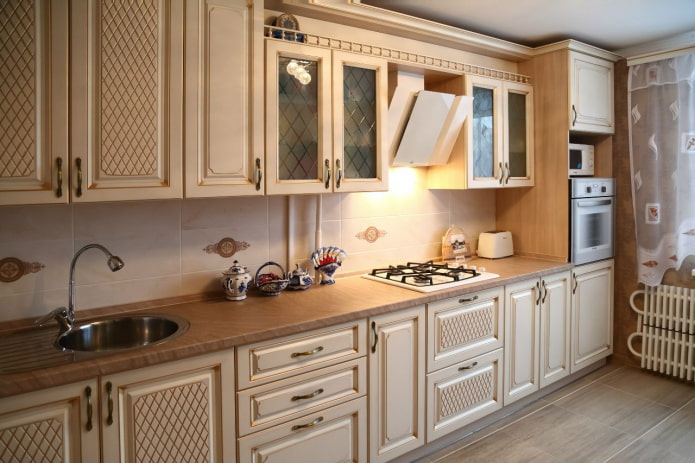
The photo shows a warm beige kitchen
Buying aged furniture means committing yourself to creating a special atmosphere for it. Choose the appropriate finishing materials for the walls, floor, apron, ceiling. Add suitable decorations, including lamps, textiles. Remember the main thing – the patina looks luxurious, which means it cannot be interrupted by something cheap and low-quality.
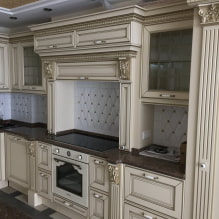
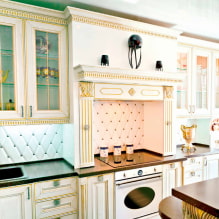

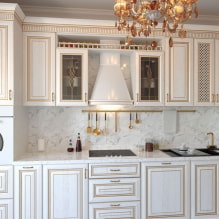


Now reading:
- Making a Pouf: 8 Detailed Master Classes with Photos and Video Instructions
- Children’s room in loft style: more than 50 photos and ideas for children of different ages.
- Living Room Design: Furniture Arrangement Tips and 40 Inspiring Photos
- Lilac curtains in the interior: 97 photos of shades, designs and patterns.
- Over 50 images of leather wallpapers: snake, crocodile and stitch.